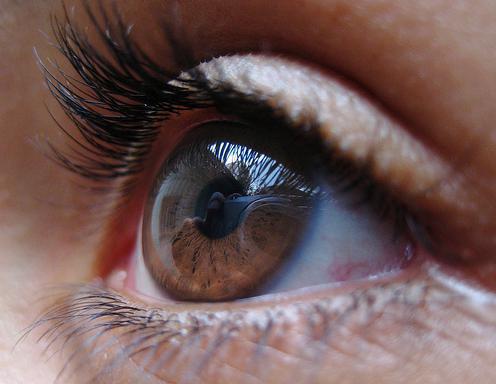

In conditions such as glaucoma, RAPD occurs secondary to damage to retinal ganglion cells and loss of retinal nerve fiber layer. RAPD in Glaucoma and Visual Field Defects Hence for the lesions at the brachium of the superior colliculus (just before the fibers reach the pretectal nucleus), vision is not affected. The relative afferent pupillary defect in such situations is without the associated loss of visual acuity, color vision, or visual field. This is because just before fibers reach lateral geniculate body (light pathway), few fibers (pupillary reflex) go to the pretectum. Hence lesions of pretectum produce RAPD in the contralateral eye. The asymmetry of pupillomotor input extends from the optic tract to the pretectal nucleus. It usually occurs in the eye with temporal field defect. Thus patients with unilateral lesions of the optic tract show a marked relative afferent pupillary defect in the eye contralateral to the lesion. There is larger input from one eye to the contralateral tract. Thus there is an asymmetry of pupillomotor input into the optic tracts.

In addition, there may be a partial crossing of temporal fibers in the chiasm. The axons of the retinal ganglion cells from the nasal retina decussate in the optic chiasm joining the temporal fibers of the other side. Other diseases causing such asymmetric or unilateral damage of optic nerve resulting in RAPD include glaucoma, optic neuritis, retrobulbar neuritis, and traumatic optic neuropathy. Ischemic optic neuropathies, such as arteritic ischemic optic neuropathy (AION), Nonarteritic ischemic optic neuropathy (NAION) causes RAPD via optic nerve ischemia and infarction secondary to optic nerve edema. This difference in pupillomotor input gives rise to relative afferent pupillary defect. When the light is shifted from the normal eye to abnormal eye, the total pupillomotor input is reduced, hence the amount of pupillary constriction is less when compared to stimulation of the normal eye. The relative afferent pupillary defect is usually seen in lesions of the afferent arm of the light pathway.

Fourth (postganglionic motor) innervate sphincter pupillae via short ciliary nerves.


 0 kommentar(er)
0 kommentar(er)
